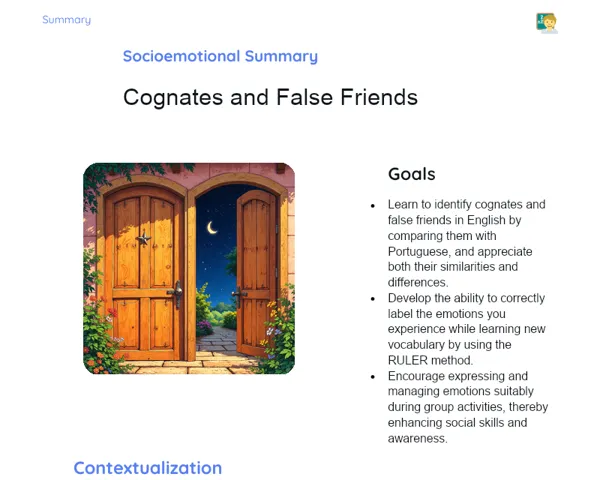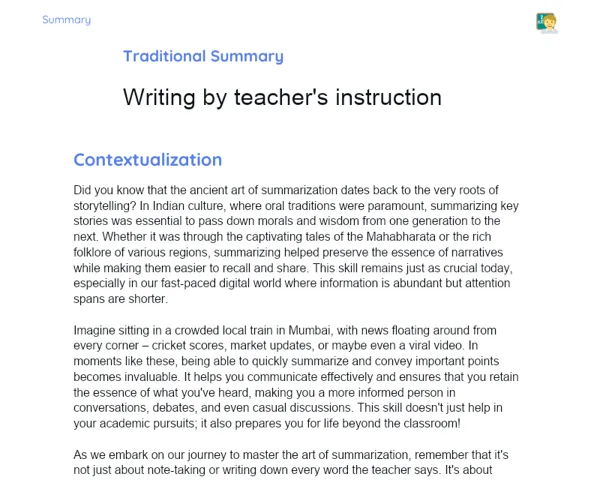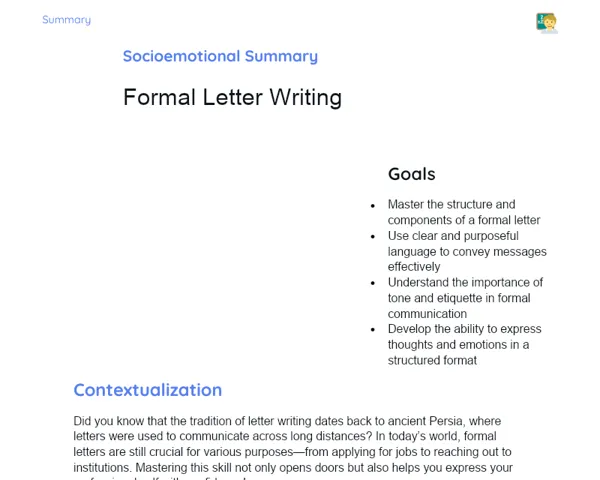Objectives
1. 🎯 Perfect the use of 'question tags', those little queries at the end of sentences that turn a simple statement into an interactive conversation. Let's learn how to formulate and apply these tags smoothly!
2. 🔍 Recognize and understand the role of 'question tags' in various texts, enhancing our ability to interpret and engage in English discussions.
Contextualization
Did you know that 'question tags' are not just for confirming information, but also help to engage the listener in conversation? This feature is very common in English, showing up in dialogues from films, shows, and our daily interactions. By mastering 'question tags', you'll not only boost your fluency but also become more natural and effective in your English conversations. Get ready to uncover how these little tags can open up big possibilities in your communication!
Important Topics
Forming Question Tags
'Question tags' are brief questions added at the end of a statement, turning it into a question. They are vital for verifying facts or seeking confirmation. Typically, they use the auxiliary verb in either a negative or affirmative form, based on the statement. For example, in 'You are coming, aren't you?', 'aren't you' is the question tag that changes the statement into a question.
-
Auxiliaries: The auxiliaries in question tags must match the verb tense and mood of the statement. For instance, if the statement is in the present simple, the auxiliary in the question tag will follow suit.
-
Negative or Affirmative: If the statement is positive, the question tag should be negative, and vice versa. This balance is key in the sentence and encourages confirmation from the listener.
-
Intonation: The way you pronounce question tags can signal if the question is merely a formality or if you genuinely seek an answer. Usually, rising intonation suggests a real question.
Uses of Question Tags
Question tags serve multiple purposes, such as confirming information, expressing surprise, irony, or keeping the conversation lively. They are especially useful in informal chats, acting as a powerful tool to engage others by inviting direct feedback and fostering an open dialogue.
-
Confirmation: Used to verify the truth of a statement, question tags are a way for speakers to ensure their information is accurate.
-
Expression of Surprise or Irony: When used with specific intonation, question tags can convey surprise or irony, adding an emotional layer to the conversation.
-
Conversational Fluency: In discussions, question tags effectively keep the conversation flowing, encouraging the other person to participate and respond.
Identifying Question Tags in Texts
Spotting question tags in texts is essential for picking up nuances in dialogues and writing. By recognizing these structures, learners can enhance their reading and interpretative skills, especially in informal or literary contexts where question tags add realism and depth.
-
Dialogue Context: Identifying question tags in dialogues aids in understanding the conversation flow and character relationships.
-
Interpretation of Intention: Correctly spotting question tags can reveal the speaker's intention, such as doubt, certainty, or sarcasm.
-
Improvement in Text Comprehension: The capability to recognize question tags is crucial for effectively interpreting texts that mimic casual speech.
Key Terms
-
Question Tag: A brief question positioned at the end of a statement to confirm or inquire about something. It typically involves the use of an auxiliary verb and reordering the subject.
-
Auxiliary: A verb that assists in forming verb tenses, voices, or moods, and is key in constructing question tags.
-
Intonation: The shift in pitch during speech. In a question tag, intonation can entirely change the meaning of the question, suggesting doubt, surprise, or confirmation.
For Reflection
-
How can intonation alter the meaning of a question tag, and what impact does this have on communication?
-
Why is it crucial to use the correct question tag regarding verb agreement and mood?
-
In what ways can mastering question tags enhance fluency and naturalness in English conversations?
Important Conclusions
-
We have mastered the skill of using 'question tags', which are essential for turning statements into engaging conversations and confirming information politely and effectively.
-
We've explored how 'question tags' are utilized in varied contexts, from casual chats to structured texts, improving our ability to understand and respond in English.
-
The relevance of 'question tags' extends beyond the classroom, serving as a potent tool to improve fluency and naturalness in conversations, as well as enhancing our understanding of dialogues in films and shows.
To Exercise Knowledge
Create a dialogue between two characters from a movie or series you enjoy, using at least five different 'question tags'. Try incorporating varied intonations and contexts. Afterwards, share this dialogue with a friend or family member and ask for their thoughts on the naturalness and accuracy of the tags.
Challenge
Linguistic Detective Challenge: Watch an episode of your favourite series in English and note down all the 'question tags' you hear. Try to identify the different intonations and uses (confirmation, surprise, irony) and discuss your findings in the next class or with a study group.
Study Tips
-
Practice 'question tags' with friends or family during everyday conversations to make learning more interactive and practical.
-
Use language learning apps like Duolingo or Babbel to practice question tags at different levels and contexts.
-
Watch YouTube videos by native English teachers explaining the use of 'question tags', and take notes on their examples and tips.



